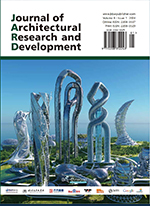Attributes of Domestic Spaces for Contemporary Habitation — A Secondary Publication
Abstract
The domestic space can be defined as the sphere that articulates the needs for subjective containment and contextual stimuli. In this sense, questions arise about the indispensable attributes that spaces must possess for this articulation to take place adequately. Architecture, as the discipline in charge of satisfying the specific spatial needs of those who inhabit these spaces and, in a broader sense, as a concrete contribution to society, must address this relationship in all its complexity and generate concrete responses that incorporate the appropriate spatial attributes during the design processes. The design processes that shape living spaces confront this dialectic, and the manner in which they do so brings identity and character to them. It is believed that the higher the level of variables that are contemplated and weighted, the greater the adequacy of spaces to the changing dynamics of the people who inhabit them. This article focuses on a thorough analysis of these spatial attributes, in parallel to the definition of each one as a particular condition for design, based on their conceptualization, breakdown, and articulation. Conceptually, the following attributes are addressed: flexibility, adaptability, variability, versatility, multiplicity, plurality, integrality, gradualness, incrementality, progressiveness, independence, connectivity, intimacy, and privacy. Each of these attributes is valued as a contribution to creating adequate habitability in contextual terms, with consideration to possible integrations and combinations.
References
Doberti R, 2014, Fundamentals of Habitation Theory, Metropolitan University for Education and Work, Argentina.
Paredes G, Carlos J, 2008, Learning to Live, Cócide Ltda, Bogotá.
Hernández MM, 2014, The House in Modern Architecture, Reverté.
Medina F, 2018, Domestic Living. Plot Special Edition, 2018(11): 2–5.
Carli C, 2017, The House, Space and Distance: The New Theories, Nobuko, Buenos Aires.
Aleman L, 2006, Low Key. Notes on Domestic Space, Nobuko, Buenos Aires.
Monteys X, Fuertes P, 2001, Collage House. An Essay on the Architecture of the House, GG Publishing, Catalonia.
Pallasmaa J, 2010, An Architecture of Humility, Fundación Caja de Arquitectos, Madrid.
Gausa M, 2010, Open: Space, Time and Information. Architecture, Housing and Contemporary City. Theory and
History of a Change, Actar Publishers, Barcelona.
Fernández-Lorenzo P, 2015, Towards an Open Home: Conceived as if the Inhabitant Mattered, Diseño.
Baudrillard J, 2010, The System of Objects, Siglo Veintiuno, Guatemala.
Hubeli E, 2001, Indefinite and Singular. Living Architecture, 2001(81): 17–19.
Montaner J, Muxí Z, Falagán D, 2011, Tools to Inhabit the Present. The Home of the 21st Century, Polytechnic University of Catalonia, Barcelona.
Fernández Gago P, Mesejo M, 2016, HOME. Parts, Assemblies and Strategies, Recolectores Urbanos Publisher, Málaga.
Ballent A, Liernur J, 2014, The House and the Multitude: Housing, Politics and Culture in Modern Argentina, Fondo de Cultura Económica, Buenos Aires.
Bryson B, 2010, At Home: A Brief History of Private Life, RBA, Barcelona.

